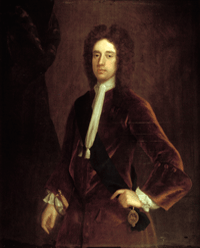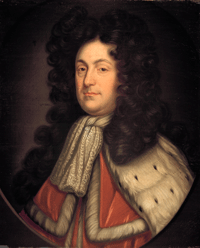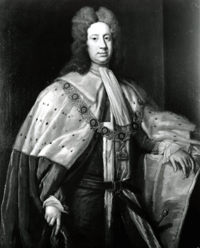| | Home | Resources | Schools Programme | Teachers | Site help | About us | Contact us | |
| You are here: Home > Resources >The Union of 1707 > Politicians and parties of the day |
Politicians and parties of the dayWhen the Scottish Parliament met in 1705, it was made up of three main parties – the Court Party, the Country Party and the Squadrone Volante. |
||
The Court PartyMembers of the Court Party, such as the Duke of Queensberry, the Duke of Argyll, the Earl of Seafield and the Earl of Mar, supported the Queen, Lord Godolphin and the English Whigs, who were all in favour of union. Many of these nobles were Presbyterian, they had well-paid jobs in the Scottish government and wished to extend their influence in the Empire. |
The Country PartyMembers of the Country Party, such as the Duke of Hamilton, Lord Belhaven and Andrew Fletcher of Saltoun opposed the government and plans for a union. The Duke wanted to be one of the commissioners appointed to draft the treaty but he was refused. Sometimes standing with the Country Party and sometimes apart from it were the Jacobites who were strongly opposed to the union. |
The Squadrone VolanteThe Squadrone Volante was a group of about 30 members of the Scottish Parliament. Their Latin name meant ‘flying squadron’, earned because their members often changed sides like a fleet of ships in the wind. They were generally moderate Presbyterians who opposed both an Episopalian church and the Jacobites. Their members, such as the Duke of Roxburghe, the Earl of Marchmont and the Marquis of Tweeddale, had split from the Country Party. None of them were selected as commissioners for the Treaty of Union, but they played an important role in the final vote in Parliament. |
 |
 |
 |
The English CommissionersMost of the English Commissioners were Whigs who favoured the union. The term ‘Whig’ was first used in the late 17th century to describe those who supported the Hanoverian succession and wanted to exclude King Charles II’s brother, James, from the monarchy because he was a Roman Catholic. Download biographical details of some of the English Commissioners (540KB, opens in new window). |
CommentatorsOpinions on polical matters were freely exchanged in letters, coffee houses and in published articles and pamphlets. Politicians from all parties were interested in promoting discussion of the union and evaluating public opinion, and there were spies and reporters throughout the country feeding back information to their political masters. Download biographical details of some contemporary commentators (420KB, opens in new window). |
Queen AnneIn Queen Anne’s first speech to Parliament in 1702 she recommended the union of the two kingdoms - but this met with little enthusiasm at the time. The deterioration in relations between Scotland and England over the succeeding few years however led politicians of both countries to rethink their positions. Download biographical details of Queen Anne (610KB, opens in new window). |
|
|